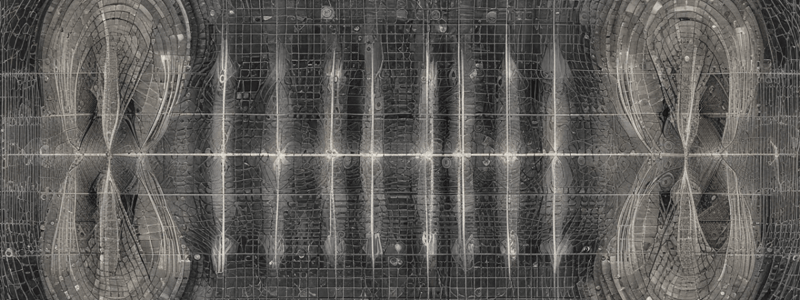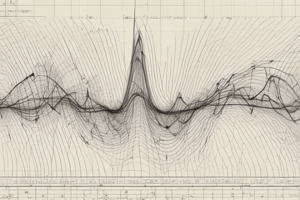Podcast
Questions and Answers
What is the primary purpose of the Fourier series in harmonic analysis?
What is the primary purpose of the Fourier series in harmonic analysis?
- To filter out high-frequency components from a signal
- To approximate a continuous function using a discrete sum of sinusoids (correct)
- To convert a discrete-time signal into a continuous-time signal
- To amplify a signal by a factor of 2
What is the range of the Fourier expansion of a periodic function?
What is the range of the Fourier expansion of a periodic function?
- (C-2L, C+2L)
- (C, C+2L) (correct)
- (C-L, C+L)
- (C, C+L)
What is the significance of Parseval's Theorem in Fourier analysis?
What is the significance of Parseval's Theorem in Fourier analysis?
- It is a method for solving differential equations
- It defines the Fourier transform of a discrete-time signal
- It is used to filter out noise from a signal
- It relates the energy of a signal to its spectral density (correct)
What is the advantage of using the half-range Fourier series?
What is the advantage of using the half-range Fourier series?
What is the main application of harmonic analysis in signal processing?
What is the main application of harmonic analysis in signal processing?
What is the primary property of a periodic function that allows it to be expanded as a Fourier series?
What is the primary property of a periodic function that allows it to be expanded as a Fourier series?
What is the relationship between the Fourier coefficients of a function and its half-range expansion?
What is the relationship between the Fourier coefficients of a function and its half-range expansion?
Which of the following is a consequence of Parseval's Theorem?
Which of the following is a consequence of Parseval's Theorem?
What is the term for the process of expressing a function as a series of harmonically related sinusoids?
What is the term for the process of expressing a function as a series of harmonically related sinusoids?
What is the name of the French mathematician who developed the theory of Fourier series?
What is the name of the French mathematician who developed the theory of Fourier series?
Flashcards are hidden until you start studying
Study Notes
Fourier Series
- A Fourier series is a representation of a periodic function in terms of the frequencies of its constituent components.
Characteristics of Periodic Functions
- A periodic function is a function that repeats its values in regular intervals, known as periods.
- The period of a function is the smallest positive real number L such that f(x + L) = f(x) for all x.
Fourier Expansion of Periodic Function
- The Fourier expansion of a periodic function in the interval (C, C+2L) is a way to express the function as an infinite sum of sine and cosine terms.
- The Fourier expansion of a periodic function f(x) in the interval (C, C+2L) is given by: f(x) = a0 + Σ[a_n cos(nπx/L) + b_n sin(nπx/L)]
Half Range Fourier Series
- The half range Fourier series is a type of Fourier series that represents a function over a half-range of the period.
- The half range Fourier series is useful for functions that are odd or even.
Parseval's Theorem
- Parseval's Theorem states that the sum of the squares of the Fourier coefficients of a function is equal to the integral of the square of the function over one period.
- The theorem is useful for finding the energy of a signal represented by a Fourier series.
Harmonic Analysis
- Harmonic analysis is the study of the representation of functions as a sum of harmonics, or sinusoidal components.
- Fourier series is a fundamental tool in harmonic analysis, used to decompose a function into its constituent frequencies.
Studying That Suits You
Use AI to generate personalized quizzes and flashcards to suit your learning preferences.





